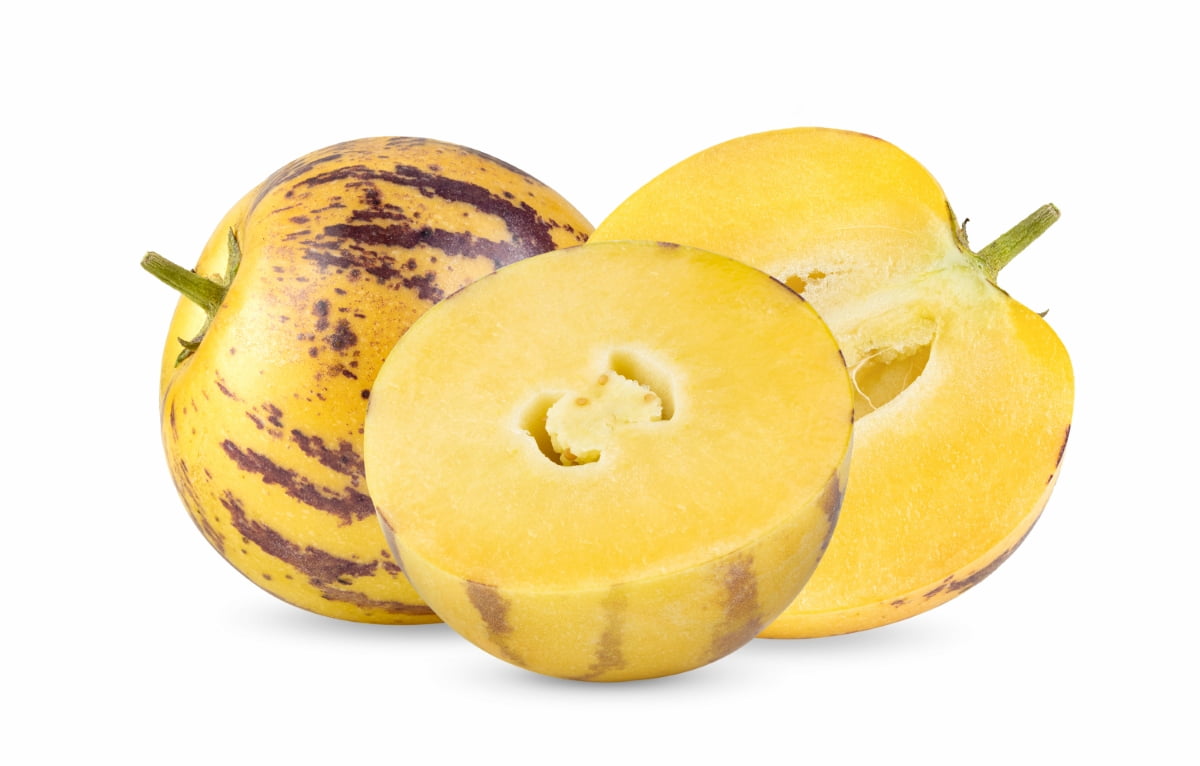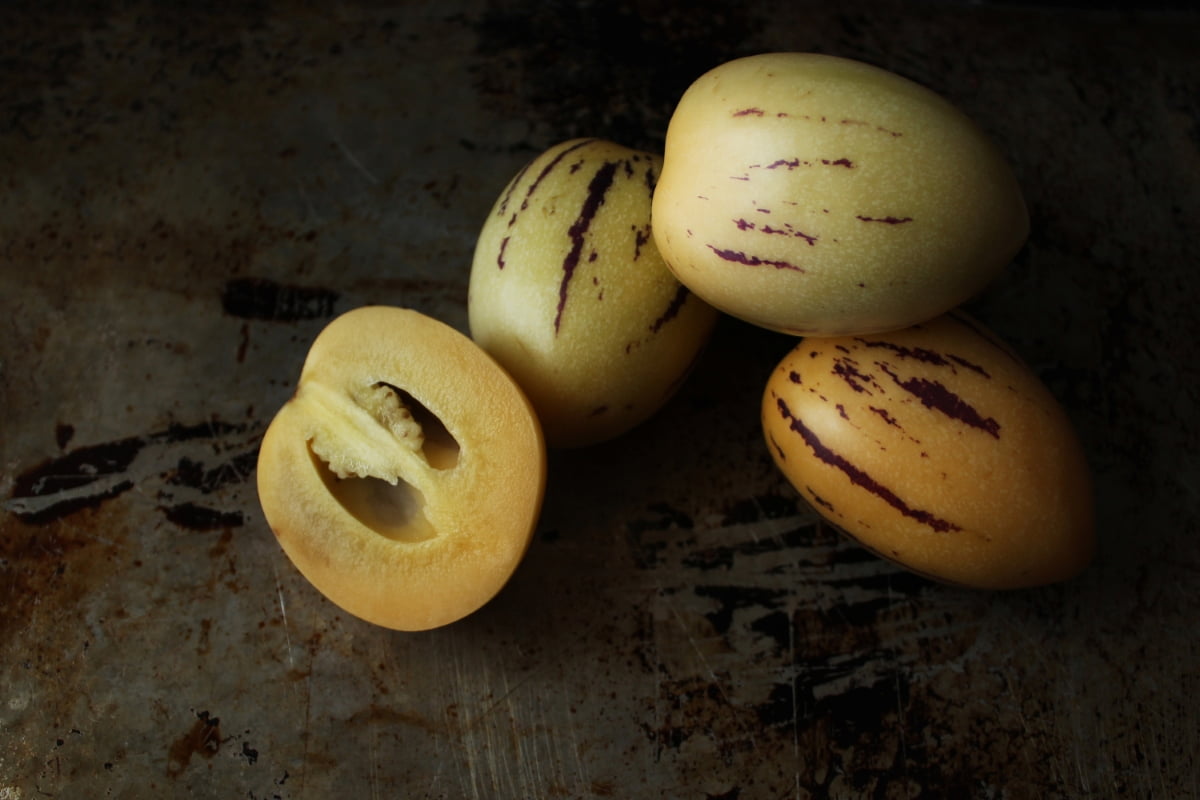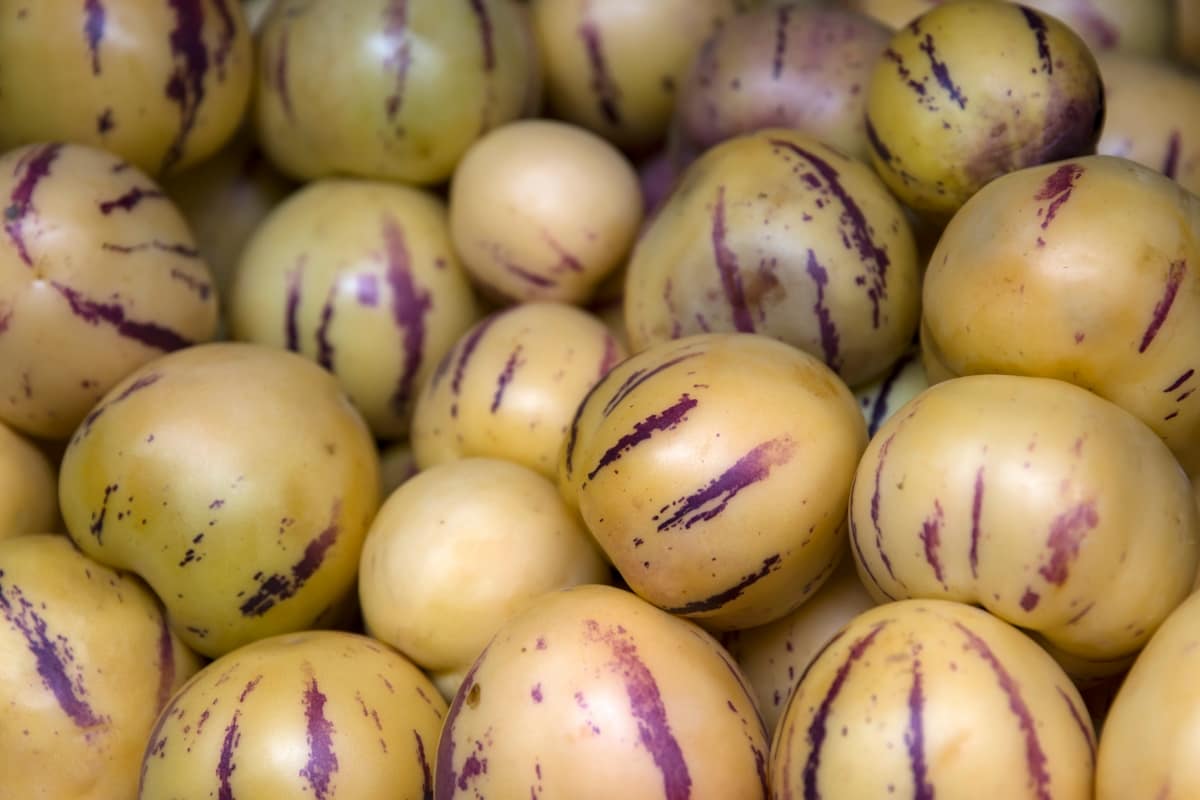Pepino Melon, also known as Solanum muricatum, is a delightful fruit that can be easily grown in pots and indoors. The advantage of growing Pepino Melon in pots is the ability to control its environment. With indoor cultivation, you have complete control over factors like light, temperature, and humidity. This means you can create optimal conditions for the plant’s growth and ensure a bountiful harvest.

How to Grow Pepino Melon in Pots and Indoors
Characteristics and Growth Requirements
The Pepino Melon plant typically grows up to 3-4 feet in height and spreads out wide. Its leaves are large and fuzzy, adding an interesting texture to your indoor or container garden. Fermentation is necessary during its active growing season to ensure proper nutrition for your Pepino Melon plant. Don’t forget about providing support, as these vines can become heavy once they start producing fruits. Sturdy trellises or cages can help prevent sprawling while allowing better airflow around the plant.
Selecting the Right Pot and Soil
When choosing a pot, it’s important to consider its size and material. A larger pot with good drainage is ideal as it allows the roots of the melon plant to spread out and prevents waterlogging. For soil, a well-draining mix is essential, as Pepino Melons prefer slightly acidic conditions. You can create your mix by combining equal parts of peat moss, perlite, and compost or purchase a high-quality potting mix formulated for fruit-bearing plants.
Step-By-Step Guide to Starting Pepino Melon Plants from Seed
Gather your supplies: You will need high-quality Pepino Melon seeds, seed trays or pots, a sterile potting mix, and a spray bottle for watering.
Prepare the soil: Fill your seed trays or pots with the potting mix, making sure it is well-draining and fertile. Moisten the soil lightly using the spray bottle.
Sow the seeds: Place 2-3 Pepino Melon seeds in each tray or pot, spacing them evenly apart. Gently press them into the soil, but do not bury them too deep.
Water regularly: Keep the growing soil moist, but avoid overwatering the Melon plant, as this can lead to rotting of the seeds or young plants.
Be patient: Germination typically takes about 7-10 days, though it may vary slightly depending on conditions.
Thin out seedlings: Once your seedlings have developed their first true leaves, carefully remove any weaker ones to allow space for healthy growth.
Transplanting: When your seedlings are about 6 inches tall and have several sets of plant leaves, they are prepared to be transplanted into individual pots with well-draining soil.
Propagating
The easiest way to propagate Pepino Melons is through cuttings. This allows you to make new plants from healthy vines, ensuring consistency in fruit quality and characteristics. Firstly, select a healthy vine that is at least six inches long. Use pruning shears to make a clean cut below a leaf node. Remove any plant leaves or flowers from the lower half of the cutting. Next, prepare a pot with a well-draining soil mix.
Dip the bottom end of the cutting into rooting hormone powder to encourage root development. Insert the melon cutting into the prepared potting mix so that at least two nodes are buried beneath the soil surface. Water thoroughly after planting, ensuring that the soil is evenly moist but not waterlogged.
Keep an eye on your cutting over time, making sure to maintain consistent moisture levels by watering as needed. Roots should start developing within 2-3 weeks. After about six weeks, your rooted Pepino Melon cutting should be ready for transplanting into its permanent container or garden bed. Handle it carefully when moving it to avoid damaging delicate roots.
Optimal Growing Conditions
These plants require bright but indirect sunlight. Placing the melon plants near a south-facing window or using grow lights can help meet their light requirements. Temperature plays an important role in the Pepino Melon growth. They thrive in temperatures between 15-24°C. Humidity levels are also important for the successful cultivation of indoor Pepino Melon. These plants prefer moderate humidity, around 50-70%. You can increase humidity by inserting a tray filled with water using a humidifier.
In case you missed it: How to Grow Passiflora Caerulea: Guide to Grow Blue Passion Flower

Watering and Fertilizing
When it comes to watering, it’s important to strike a balance. Overwatering the melon plant can lead to root rot, while underwatering can cause stress and hinder fruit production. The key is to keep the soil moist but not waterlogged. Fertilizing is equally essential in ensuring healthy growth and abundant harvests. Use a balanced fertilizer with NPK equally every four weeks during the growing season.
Training and Supporting
The effective method of training Pepino Melon vines is by using trellises or stakes. As the plants grow, gently tie their stems to the support structure using plant ties. This will help keep the vines upright and promote better air circulation around the foliage. Regularly check on your growing Pepino Melons and adjust the ties as required to accommodate their growth.
Be careful not to tie them too tightly, as this can restrict their movement and cause damage. Another technique for supporting these melon vines is by using tomato cages or wire mesh frames. Place these structures around each plant when they are still young so that they have something sturdy to lean on as they grow taller.
Pruning and Maintenance
Regular pruning helps to control the plant’s size and shape and encourages better airflow, which reduces the risk of diseases. Start by removing any damaged branches with clean pruning shears. As your Pepino Melon grows, it will produce lateral shoots or side branches. You can pinch off these shoots when they are small to encourage a more compact growth habit or allow them to grow if you prefer a bushier look. Regular maintenance tasks include checking for pests such as aphids or spider mites and taking appropriate measures to control them if necessary.
In case you missed it: How to Grow Shampoo Ginger Lily: From Propagation to Harvest

Dealing with Pests and Diseases
The major pest affecting Pepino Melon is aphids; these pests cause leaves to curl or distort. To combat aphids, try spraying your Pepino Melon plants with water and dish soap mixture. This will suffocate the plant insects and prevent them from spreading further. Another option is introducing beneficial insects into your indoor garden, as they feed on aphids and help control their population.
Another potential pest is whiteflies, which are small flying insects that infest the undersides of leaves. They can weaken the plant by sucking out its juices and transmitting viral diseases. To tackle whiteflies, you can use sticky traps or insecticidal soap sprays. In terms of diseases, one common issue for Pepino Melons is powdery mildew. This infection appears as a white powdery coating on leaves and stems. To prevent powdery mildew, make sure your melon plants have good air circulation by spacing adequately apart in containers or using fans indoors.
If you notice any signs of disease spread in your indoor garden, it’s important to act quickly to prevent further damage. Remove infected leaves or plants promptly to avoid spreading pathogens throughout your entire crop. By being vigilant about pest management and maintaining optimal growing conditions for your indoor Pepino Melon plants, you can minimize the risk of pests and diseases impacting their growth.
Overwintering Indoors
As the colder months approach, you may be wondering what to do with your beloved indoor Pepino Melon plants. Well, the good news is that you can continue to enjoy their sweet fruits even during the winter season by overwintering them indoors. When indoor air tends to be drier during the winter season, provide some humidity for your Pepino Melon plants by placing a tray filled with water near their containers or misting their leaves regularly.
Regularly inspect your indoor melons for any signs of plant pests or diseases, such as aphids or powdery mildew. Catching these issues early on will help prevent them from spreading and damaging your precious crop.
In case you missed it: How to Grow Monstera Albo from Cuttings: Everything About Propagation of Monstera Albo

Conclusion
By growing Pepino Melon in pots, you have greater control over its environment – from lighting conditions to watering requirements. This makes it easier to maintain optimal growth conditions and ensure a healthy harvest. Growing in pots allows you to have complete control over the growing conditions, ensuring optimal fruit production.
- Ultimate Guide to Ossabaw Island Hog: Breeding, Raising, Diet, and Care
- Ultimate Guide to Juliana Pig: Raising Facts, Size, Diet, Care, and Lifespan
- Raising Lleyn Sheep: Disadvantages, Price, Uses, Characteristics, and Care
- Ultimate Guide to Meishan Pig: Breed Facts, Breeding, Raising, and Care
- Ultimate Guide to Teacup Pigs: Raising, Diet, Lifespan, Cost, and Care
- Guide to Raising Poll Dorset Sheep: Facts, Profile, Characteristics, Uses, and Care
- Ultimate Guide to Bighorn Sheep: Characteristics, Diet, Lifespan, Breeding, and Lifecycle
- Ultimate Guide to Raising Katahdin Sheep: Farming Facts, Breed Profile, Uses, and Care
- Ultimate Guide to Raising Oreo Cows: Belted Galloways Farming Facts, Profile, Uses, and Care